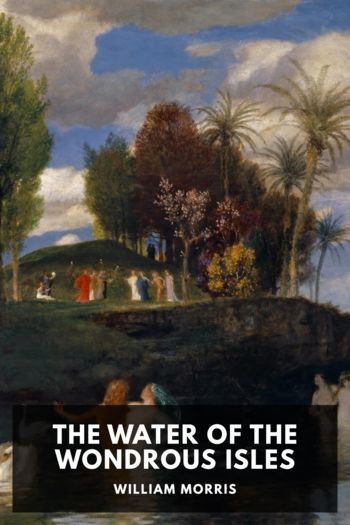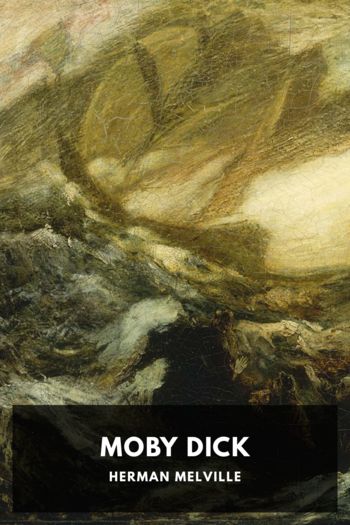Short Fiction, Herman Melville [read out loud books TXT] 📗

- Author: Herman Melville
Book online «Short Fiction, Herman Melville [read out loud books TXT] 📗». Author Herman Melville
It might have been but a deception of the vapors, but, the longer the stranger was watched the more singular appeared her manoeuvres. Ere long it seemed hard to decide whether she meant to come in or no—what she wanted, or what she was about. The wind, which had breezed up a little during the night, was now extremely light and baffling, which the more increased the apparent uncertainty of her movements. Surmising, at last, that it might be a ship in distress, Captain Delano ordered his whaleboat to be dropped, and, much to the wary opposition of his mate, prepared to board her, and, at the least, pilot her in. On the night previous, a fishing-party of the seamen had gone a long distance to some detached rocks out of sight from the sealer, and, an hour or two before daybreak, had returned, having met with no small success. Presuming that the stranger might have been long off soundings, the good captain put several baskets of the fish, for presents, into his boat, and so pulled away. From her continuing too near the sunken reef, deeming her in danger, calling to his men, he made all haste to apprise those on board of their situation. But, some time ere the boat came up, the wind, light though it was, having shifted, had headed the vessel off, as well as partly broken the vapors from about her.
Upon gaining a less remote view, the ship, when made signally visible on the verge of the leaden-hued swells, with the shreds of fog here and there raggedly furring her, appeared like a whitewashed monastery after a thunderstorm, seen perched upon some dun cliff among the Pyrenees. But it was no purely fanciful resemblance which now, for a moment, almost led Captain Delano to think that nothing less than a shipload of monks was before him. Peering over the bulwarks were what really seemed, in the hazy distance, throngs of dark cowls; while, fitfully revealed through the open portholes, other dark moving figures were dimly descried, as of Black Friars pacing the cloisters.
Upon a still nigher approach, this appearance was modified, and the true character of the vessel was plain—a Spanish merchantman of the first class, carrying negro slaves, amongst other valuable freight, from one colonial port to another. A very large, and, in its time, a very fine vessel, such as in those days were at intervals encountered along that main; sometimes superseded Acapulco treasure-ships, or retired frigates of the Spanish king’s navy, which, like superannuated Italian palaces, still, under a decline of masters, preserved signs of former state.
As the whaleboat drew more and more nigh, the cause of the peculiar pipe-clayed aspect of the stranger was seen in the slovenly neglect pervading her. The spars, ropes, and great part of the bulwarks, looked woolly, from long unacquaintance with the scraper, tar, and the brush. Her keel seemed laid, her ribs put together, and she launched, from Ezekiel’s Valley of Dry Bones.
In the present business in which she was engaged, the ship’s general model and rig appeared to have undergone no material change from their original warlike and Froissart pattern. However, no guns were seen.
The tops were large, and were railed about with what had once been octagonal network, all now in sad disrepair. These tops hung overhead like three ruinous aviaries, in one of which was seen, perched, on a ratlin, a white noddy, a strange fowl, so called from its lethargic, somnambulistic character, being frequently caught by hand at sea. Battered and mouldy, the castellated forecastle seemed some ancient turret, long ago taken by assault, and then left to decay. Toward the stern, two high-raised quarter galleries—the balustrades here and there covered with dry, tindery sea-moss—opening out from the unoccupied state-cabin, whose deadlights, for all the mild weather, were hermetically closed and calked—these tenantless balconies hung over the sea as if it were the grand Venetian canal. But the principal relic of faded grandeur was the ample oval of the shield-like stern-piece, intricately carved with the arms of Castile and Leon, medallioned about by groups of mythological or symbolical devices; uppermost and central of which was a dark satyr in a mask, holding his foot on the prostrate neck of a writhing figure, likewise masked.
Whether the ship had a figurehead, or only a plain beak, was not quite certain, owing to canvas wrapped about that part, either to protect it while undergoing a refurbishing, or else decently to hide its decay. Rudely painted or chalked, as in a sailor freak, along the forward side of a sort of pedestal below the canvas, was the sentence, “Seguid vuestro jefe” (follow your leader); while upon the tarnished headboards, near by, appeared, in stately capitals, once gilt, the ship’s name, San Dominick, each letter streakingly corroded with tricklings of copper-spike rust; while, like mourning weeds, dark festoons of sea-grass slimily swept to and fro over the name, with every hearse-like roll of the hull.
As, at last, the boat was hooked from the bow along toward the gangway amidship, its keel, while yet some inches separated from the hull, harshly grated as on





Comments (0)